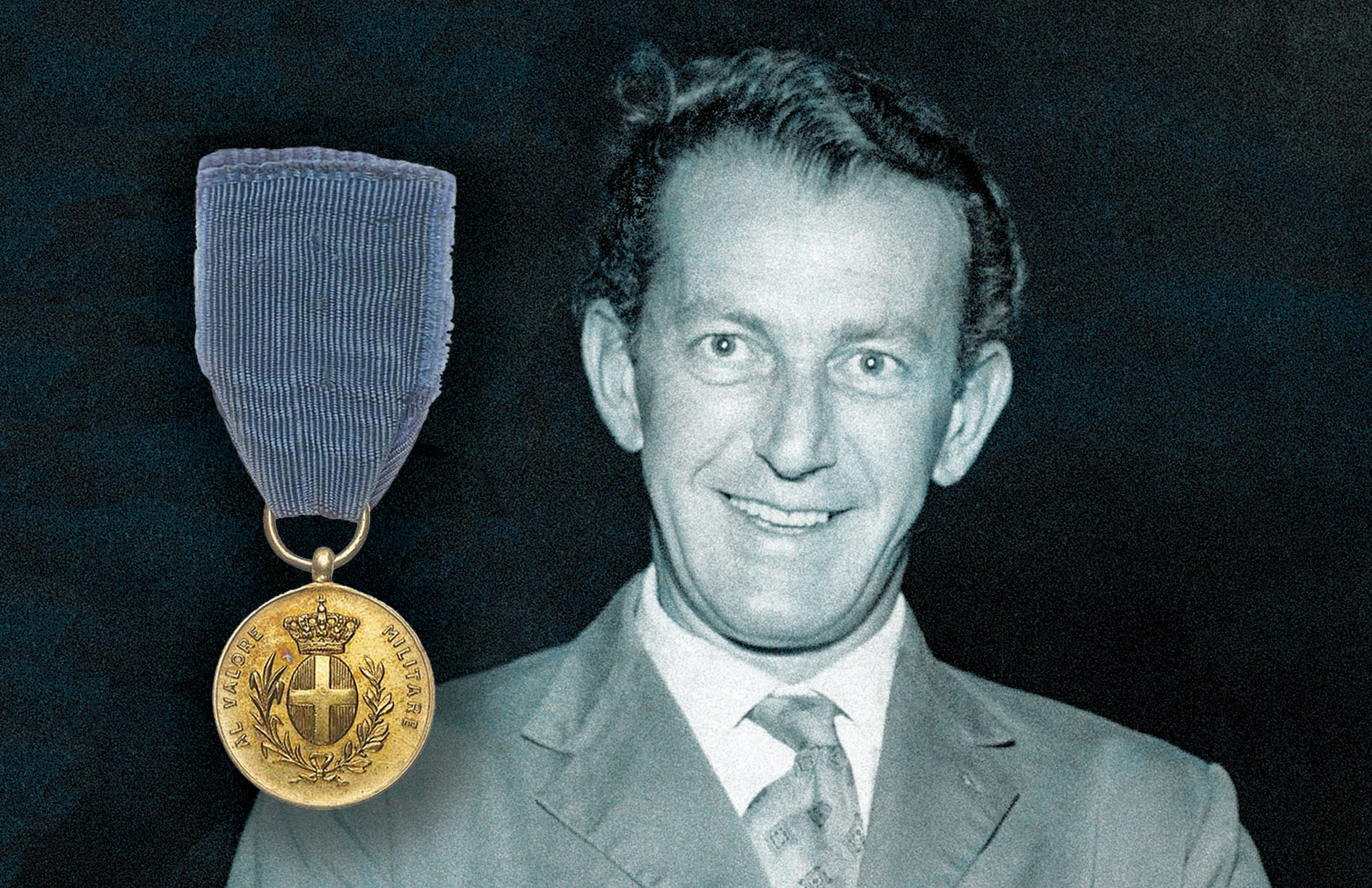Three manned torpedoes, each ridden by two frogmen, slid off the deck of the submerged Italian submarine Scirè a mile offshore from Alexandria, Egypt. Approaching the harbor entrance, the trio slipped in past the antisubmarine net as three British destroyers returned to port. It was 1 a.m. on Dec. 19, 1941. One of the torpedoes, commanded by Lt. Luigi Durand de la Penne, headed for the British battleship HMS Valiant.
Prime Minister Winston Churchill described what happened next as “an extraordinary example of courage and geniality.” It would earn de la Penne his nation’s highest award, the Gold Medal of Military Valor, an honor bestowed on him by the hand of his enemy.
As they reached Valiant’s anti-torpedo net, in some 55 feet of water, de la Penne, secured to the torpedo by a safety line, dove to see whether they could slip beneath it. Soon after they crossed the net, however, the torpedo ceased working and sank to the seafloor, possibly because his safety line had fouled the prop.
De la Penne and Emilio Bianchi pushed the torpedo and its 660-pound detachable warhead (see P. 20) toward Valiant until Bianchi’s breathing gear malfunctioned, forcing him to surface. Working alone, de la Penne managed to move the torpedo beneath the battleship. After arming the warhead, he went in search of Bianchi.
As he surfaced, a sentry caught the frogman in a spotlight and fired a warning burst of machine-gun fire into the water. The British captured the pair and took them aboard Valiant, then commanded by Capt. Charles Morgan.
Under interrogation, Morgan recalled, de la Penne “refused to say whether he had attached anything to the ship.” Hoping to exert psychological pressure on the Italian, Morgan had both frogmen confined “down below, close to that part of the ship’s side where I thought the explosive charge might have been fixed.” Had the captain known the torpedo was resting on the bottom, he could have simply moved Valiant to safety.
But de la Penne didn’t break. Knowing the mine was set to explode in three hours, he waited in the darkness of a forward hold.
After two hours and 50 minutes of anxious clock-watching, de la Penne told Morgan only that the charge was about to explode, giving the captain scant minutes to evacuate the ship’s lower decks. At 6:04 a.m. the charge detonated, blowing a hole through the hull 21 feet below the waterline.
Thanks to de la Penne’s warning, though, the British suffered no casualties. That morning charges from the other two manned torpedoes severely damaged the dreadnought battleship Queen Elizabeth and the tanker Sagona. Both battleships sank to the bottom, their decks above water, and remained immobile for months. De la Penne and Bianchi’s four fellow frogmen escaped but were later captured in Egypt.
For a time the Italians had wrested naval control of the eastern Mediterranean from the British.
Morgan, impressed by de la Penne’s chivalry in having spared enemy sailors’ lives, tried to secure a British decoration for the Italian lieutenant but was rebuffed. After Italy was knocked out of the war in 1945, Crown Prince Umberto II came to Taranto naval base to award de la Penne the Gold Medal for Military Valor. Morgan, then a rear admiral on an inspection tour at Taranto, pinned the medal on the frogman.
“I had the pleasure and honor of decorating de la Penne with the highest award granted by the Italian navy for the very courageous and gallant attack he made on my ship three years and three months ago,” Morgan wrote.
De la Penne rose to be a vice admiral in the Italian navy. He died at age 77 in 1992. A present-day class of Italian destroyers is named after him. MH
This article appeared in the March 2021 issue of Military History magazine. For more stories, subscribe here and visit us on Facebook:






